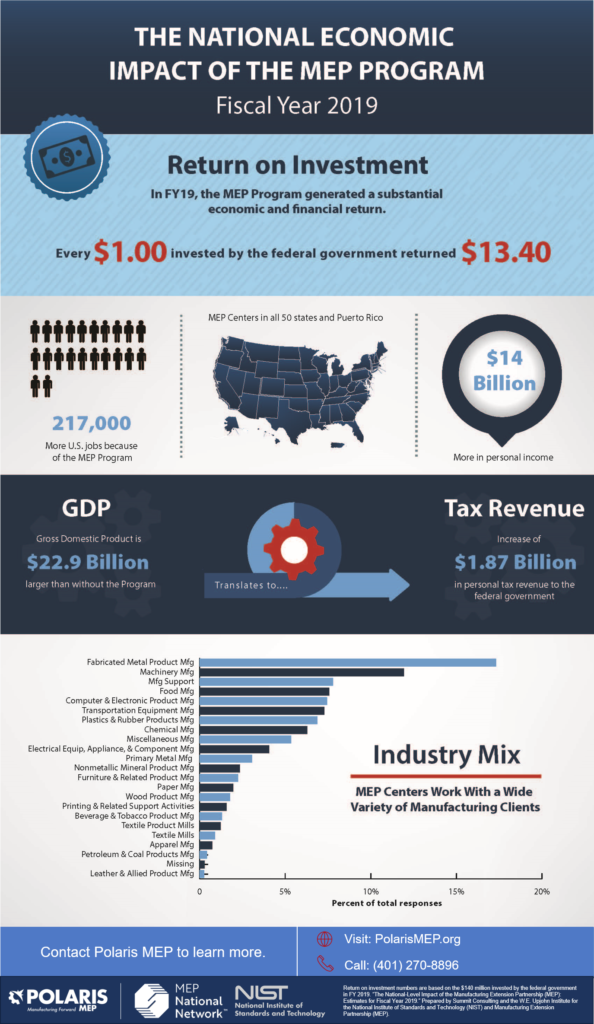A new study by Summit Consulting and the W.E. Upjohn Institute finds that the National Institute of Standards and Technology’s Hollings Manufacturing Extension Partnership (NIST MEP) Program generates a substantial economic and financial return of nearly 13.4:1 for the $140 million annually invested by the federal government.
The NIST MEP program is a public-private partnership created in 1988 to improve the global competitiveness and productivity of America’s small- and medium-sized manufacturers. Polaris MEP is Rhode Island’s MEP center.
A Positive Return on Investment
The study, available at https://research.upjohn.org/reports/244/, reports that the $140 million invested in MEP during FY2019 generated nearly a 13.4:1 increase in federal personal income tax ($1.87B/$140M federal investment).
The study only looks at personal income tax and not business taxes. In addition, the analysis provides a conservative estimate of broader impacts as they are based only on completed surveys and do not include estimates of additional impacts of center-activities for non-respondents.
The MEP Program Generates Additional Jobs for the U.S.
The study finds that total employment in the U.S. is nearly 217,000 higher because of MEP center projects. This estimate includes both direct, indirect, and induced jobs generated by MEP projects. These jobs support additional manufacturing jobs critical to U.S. supply chains and jobs outside of manufacturing.
Other Positive Impacts of the MEP Program
The study examines additional areas of economic impact generated by the MEP Program. It finds: (1) personal income is $14.0 billion higher, and (2) GDP is $22.9 billion larger. This translates into an increase of $1.87 billion in personal income tax revenue to the federal government.
An infographic published by NIST MEP captures the findings and more.

